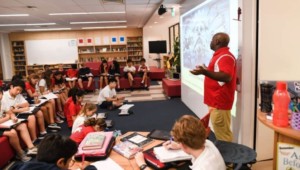Good Work: Making Tough Decisions

Two roads diverged in a wood, and I —I took the one less traveled by, and that has made all the difference.
-Robert Frost
“The Road Not Taken” is my daughter’s favorite poems. As a school superintendent I thought about it the week that I made a decision about the level of local funding for our schools. It was one of the most difficult decisions of my career. The decision pitted my hopes and dreams for the future against the support of my employers, my heart against my head, urgency against patience, and private desires against public obligations.
At the time, our local levy—which accounted for about a quarter of our funding—required a supermajority vote every two years. I decided to request less than the maximum amount, something that was not customary. By providing a tax cut we certainly took the road less traveled compared to other districts. We left $3 million per year on the table–money that could have helped us fulfill our goals more rapidly. All things considered, it was the best decision I could have made. The recommendation received full Board support and we passed the levy vote by a slim margin.
My funding question was painfully obvious, but most decisions are not. Many decisions are made unconsciously by following tradition. Important crossroads are frequently encountered but not always observed.
Before you fill an open position, step back and look at the decision. It is often a great opportunity to reconsider the structure, to ensure that the organization still meets the challenges at hand. Avoid budgeting processes that assume that everything should be allocated the same way that it was the year before. Spending money and hiring people are often important crossroads.
When you spot an important decision, try to do a little predictive analysis. What options exist? What are the likely outcomes for each option? What’s the predicted impact of each outcome?
Look for crossroads–and the road less traveled. When you see a crossroads, take time to survey the landscape, learn just enough to gauge the risk, and pick a path. Act with boldness. Correct your course with humility.






0 Comments
Leave a Comment
Your email address will not be published. All fields are required.